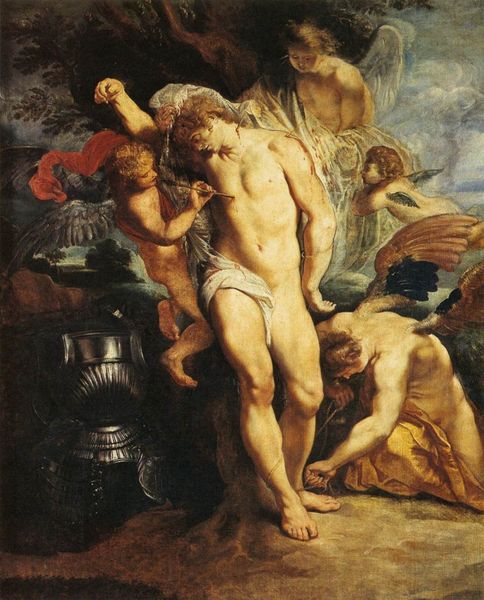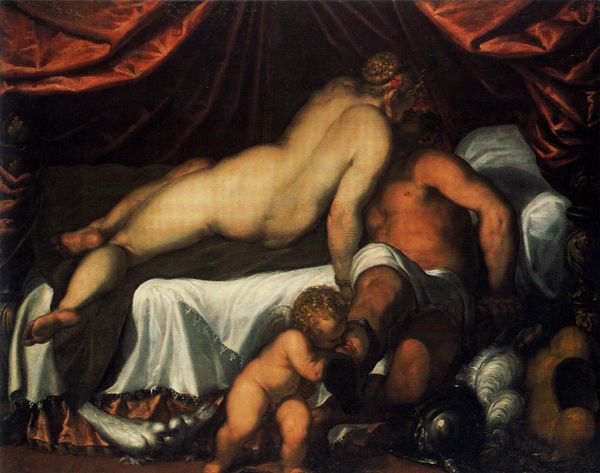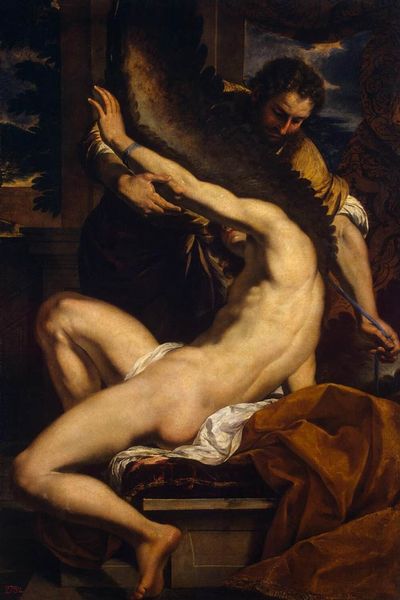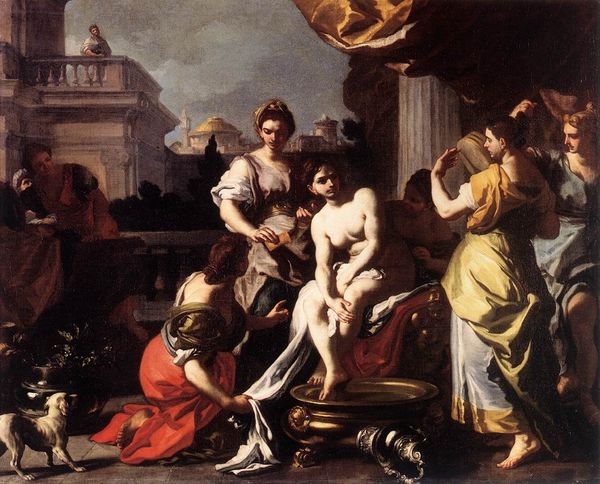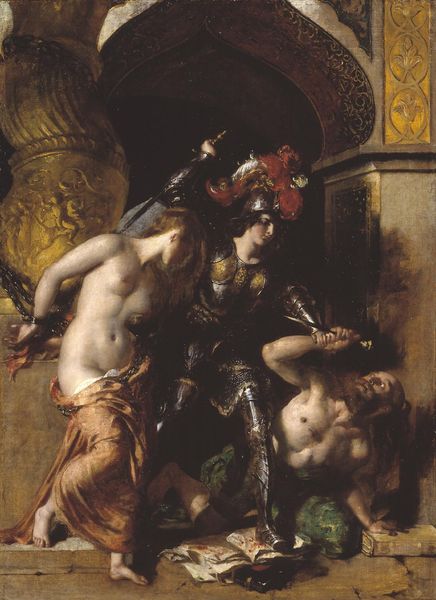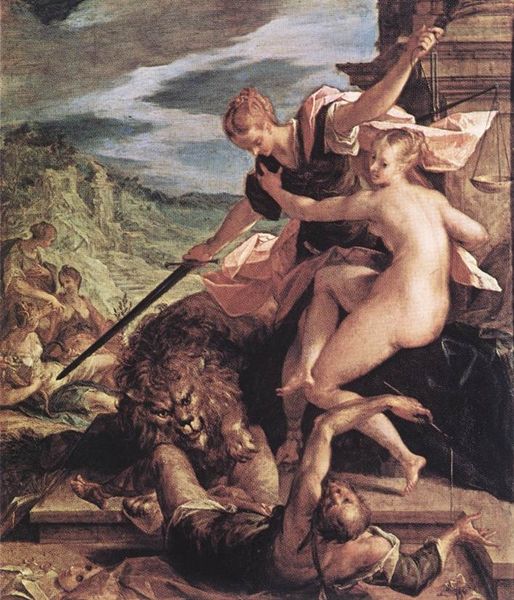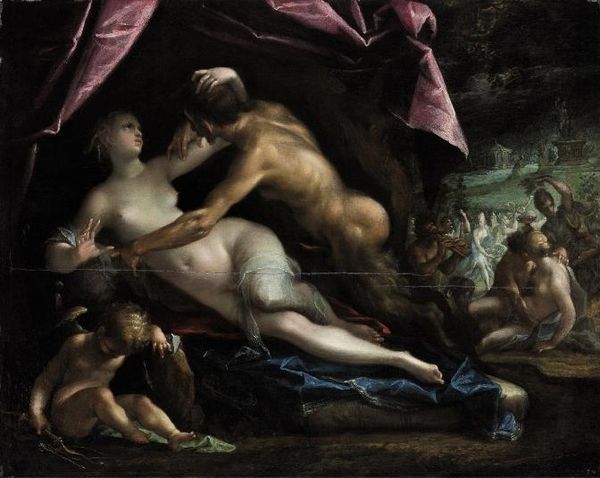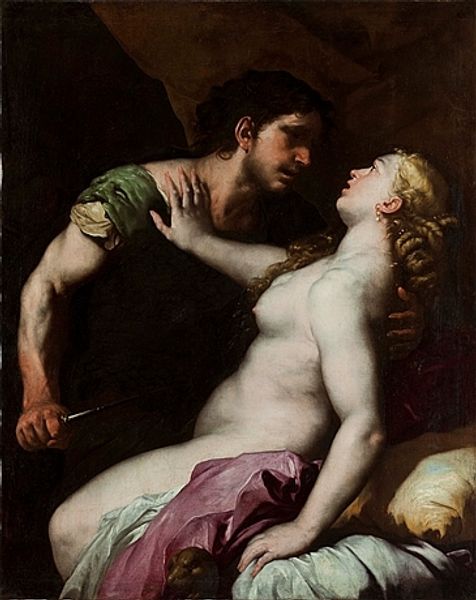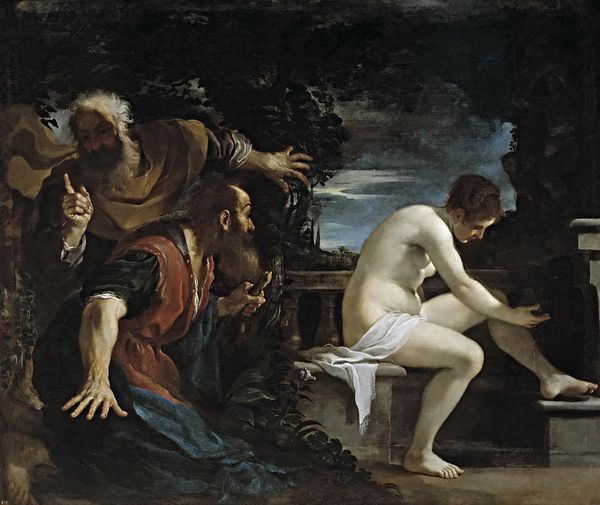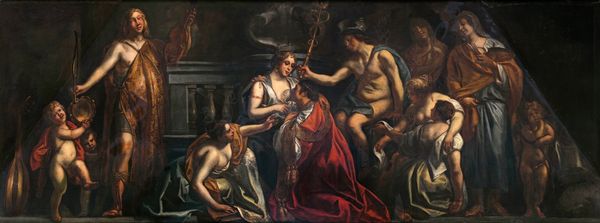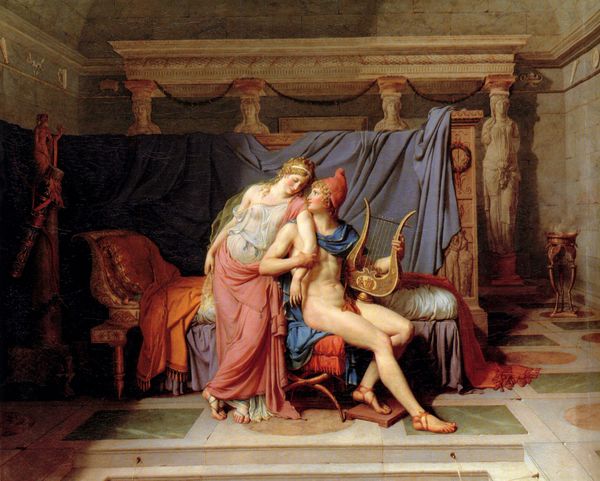
painting, oil-paint
#
venetian-painting
#
painting
#
oil-paint
#
mannerism
#
figuration
#
oil painting
#
roman-mythology
#
cupid
#
horse
#
mythology
#
human
#
history-painting
#
italian-renaissance
#
nude
#
realism
Dimensions: 47 x 47 cm
Copyright: Public domain
Curator: Paolo Veronese’s "Venus and Mars with Cupid and a Horse," painted around 1570. It’s a rich oil on canvas work characteristic of Venetian Mannerism. Editor: Immediately, it strikes me as strangely intimate. The composition feels crammed and a little bit off-kilter, like glimpsing something you shouldn't see. Not a battlefield, but a boudoir bursting with unspoken tension. Curator: Indeed, Veronese frequently adapted classical themes to reflect contemporary Venetian society, creating a link between mythological narratives and the patrons of his era. In the sixteenth century, marriage between aristocrats was often likened to the sacred bond between Venus and Mars. It's possible the painting was made to commemorate a wedding. Editor: Makes you wonder about the bedroom dramas of the time. I find my eyes keep darting to the horse, that's being pulled by Cupid! A huge contrast, especially considering this supposedly romantic encounter... maybe hinting that lust is a beast only loosely held? And it gives off this energy of, like, interruption? Someone is expected back shortly! Curator: That interpretation touches upon the tensions inherent in Mannerism. The exaggerated forms, the dynamic composition... they all disrupt the Renaissance ideal of balanced harmony. This could very well indicate the uncertain atmosphere that characterizes the end of the Renaissance. Veronese, however, frequently avoided getting mired in ideological conflict. Instead, he used vivid colors and elegant forms, possibly appealing to wealthy Venetians. Editor: Veronese clearly has a flair. A gift, actually, for conveying tactile qualities, too— the drape of that dark cloth, or even Venus's creamy skin. It’s incredibly lush! What do you suppose he’s really trying to capture, you know? Like the underlying story... Curator: That's the enigma of art, isn’t it? To tell you, I really cannot pretend that I know! Even art historians can simply make reasonable, theoretically substantiated claims... Editor: So maybe the best thing to do is leave the interpretations open... maybe Veronese wanted each person to take away something slightly different. And for me that works, every time I look I discover new little clues. Curator: It certainly gives a fresh angle on how social context interacts with more universal feelings around beauty and marriage, love, and discord. Editor: Well, after my viewing experience, it has provided insight into something completely different from where I began.
Comments
No comments
Be the first to comment and join the conversation on the ultimate creative platform.
